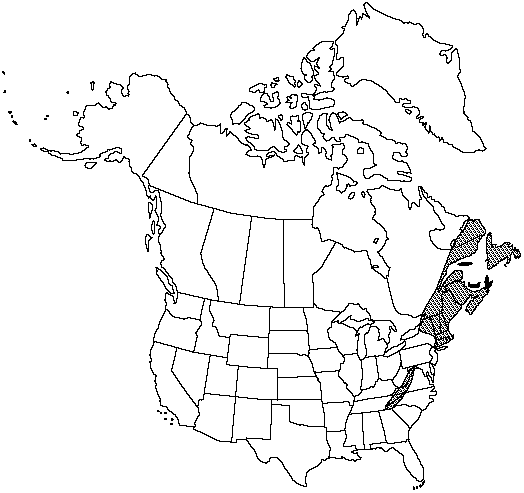FNA>Volume Importer |
FNA>Volume Importer |
| Line 29: |
Line 29: |
| | }}<!-- | | }}<!-- |
| | | | |
| − | --><span class="statement" id="st-d0_s0" data-properties="leaf architecture;leaf condition;leaf length;leaf width"><b>Leaves </b>monomorphic, dying back in winter, 25–90 × 15–30 cm.</span> <span class="statement" id="st-d0_s1" data-properties="petiole length;petiole architecture or pubescence"><b>Petiole </b>1/3 length of leaf, scaly at least at base;</span> <span class="statement" id="st-d0_s2" data-properties="scale arrangement;scale coloration;scale coloration">scales scattered, brown, sometimes with darker patch at base.</span> <span class="statement" id="st-d0_s3" data-properties="blade coloration;blade shape;blade shape;blade growth form or texture;blade architecture or function or pubescence"><b>Blade </b>light green, deltate-ovate, 3-pinnate-pinnatifid, herbaceous, not glandular.</span> <span class="statement" id="st-d0_s4" data-properties="pinna shape"><b>Pinnae </b>in plane of blade, lanceolate;</span> <span class="statement" id="st-d0_s5" data-properties="basal pinna shape;basal pinna shape;basal pinna shape;basal pinna size;basal pinnule variability;pinnule arrangement;pinnule orientation;pinnule length or size;pinnule width;basal pinnule orientation">basal pinnae deltate to broadly lanceolate, not reduced, basal pinnules equal to adjacent pinnules, basal basiscopic pinnule much longer and 2 times width of basal acroscopic pinnule (only in this species);</span> <span class="statement" id="st-d0_s6" data-properties="pinnule margin shape;tooth architecture or shape">pinnule margins toothed, teeth spine-tipped.</span> <span class="statement" id="st-d0_s7" data-properties="sorus position"><b>Sori </b>midway between midvein and margin of segments.</span> <span class="statement" id="st-d0_s8" data-properties="gland count"><b>Indusia </b>usually lacking glands.</span> <span class="statement" id="st-d0_s9" data-properties="2n chromosome count">2n = 164.</span><!-- | + | --><span class="statement" id="st-undefined" data-properties=""><b>Leaves </b>monomorphic, dying back in winter, 25–90 × 15–30 cm. <b>Petiole</b> 1/3 length of leaf, scaly at least at base; scales scattered, brown, sometimes with darker patch at base. <b>Blade</b> light green, deltate-ovate, 3-pinnate-pinnatifid, herbaceous, not glandular. <b>Pinnae</b> in plane of blade, lanceolate; basal pinnae deltate to broadly lanceolate, not reduced, basal pinnules equal to adjacent pinnules, basal basiscopic pinnule much longer and 2 times width of basal acroscopic pinnule (only in this species); pinnule margins toothed, teeth spine-tipped. <b>Sori</b> midway between midvein and margin of segments. <b>Indusia</b> usually lacking glands. <b>2n</b> = 164.</span><!-- |
| | | | |
| | -->{{Treatment/Body | | -->{{Treatment/Body |
| Line 57: |
Line 57: |
| | |publication year=1930 | | |publication year=1930 |
| | |special status= | | |special status= |
| − | |source xml=https://jpend@bitbucket.org/aafc-mbb/fna-fine-grained-xml.git/src/287ef3db526bd807d435a3c7423ef2df1e951227/V2/V2_79.xml | + | |source xml=https://jpend@bitbucket.org/aafc-mbb/fna-data-curation.git/src/9216fc802291cd3df363fd52122300479582ede7/coarse_grained_fna_xml/V2/V2_79.xml |
| | |genus=Dryopteris | | |genus=Dryopteris |
| | |species=Dryopteris campyloptera | | |species=Dryopteris campyloptera |
| − | |2n chromosome count=164
| |
| − | |basal pinna shape=deltate;broadly lanceolate
| |
| − | |basal pinna size=not reduced
| |
| − | |basal pinnule orientation=acroscopic
| |
| − | |basal pinnule variability=equal
| |
| − | |blade architecture or function or pubescence=not glandular
| |
| − | |blade coloration=light green
| |
| − | |blade growth form or texture=herbaceous
| |
| − | |blade shape=3-pinnate-pinnatifid;deltate-ovate
| |
| − | |gland count=lacking
| |
| − | |leaf architecture=monomorphic
| |
| − | |leaf condition=dying
| |
| − | |leaf length=25cm;90cm
| |
| − | |leaf width=15cm;30cm
| |
| − | |petiole architecture or pubescence=scaly
| |
| − | |petiole length=1/3 length of leaf
| |
| − | |pinna shape=lanceolate
| |
| − | |pinnule arrangement=adjacent
| |
| − | |pinnule length or size=longer
| |
| − | |pinnule margin shape=toothed
| |
| − | |pinnule orientation=basiscopic
| |
| − | |pinnule width=2 times width of basal acroscopic pinnule
| |
| − | |scale arrangement=scattered
| |
| − | |scale coloration=darker patch;brown
| |
| − | |sorus position=midway
| |
| − | |tooth architecture or shape=spine-tipped
| |
| | }}<!-- | | }}<!-- |
| | | | |
| | -->[[Category:Treatment]][[Category:Dryopteris]] | | -->[[Category:Treatment]][[Category:Dryopteris]] |
Leaves monomorphic, dying back in winter, 25–90 × 15–30 cm. Petiole 1/3 length of leaf, scaly at least at base; scales scattered, brown, sometimes with darker patch at base. Blade light green, deltate-ovate, 3-pinnate-pinnatifid, herbaceous, not glandular. Pinnae in plane of blade, lanceolate; basal pinnae deltate to broadly lanceolate, not reduced, basal pinnules equal to adjacent pinnules, basal basiscopic pinnule much longer and 2 times width of basal acroscopic pinnule (only in this species); pinnule margins toothed, teeth spine-tipped. Sori midway between midvein and margin of segments. Indusia usually lacking glands. 2n = 164.
Habitat: Cool, moist woods at increasing elevation southward, frequently only at summits of mountains
Elevation: 0–1500 m
Distribution
N.B., Nfld., N.S., P.E.I., Que., Conn., Maine, Md., Mass., N.H., N.Y., N.C., R.I., Tenn., Vt., Va., W.Va.
Discussion
Selected References
None.
